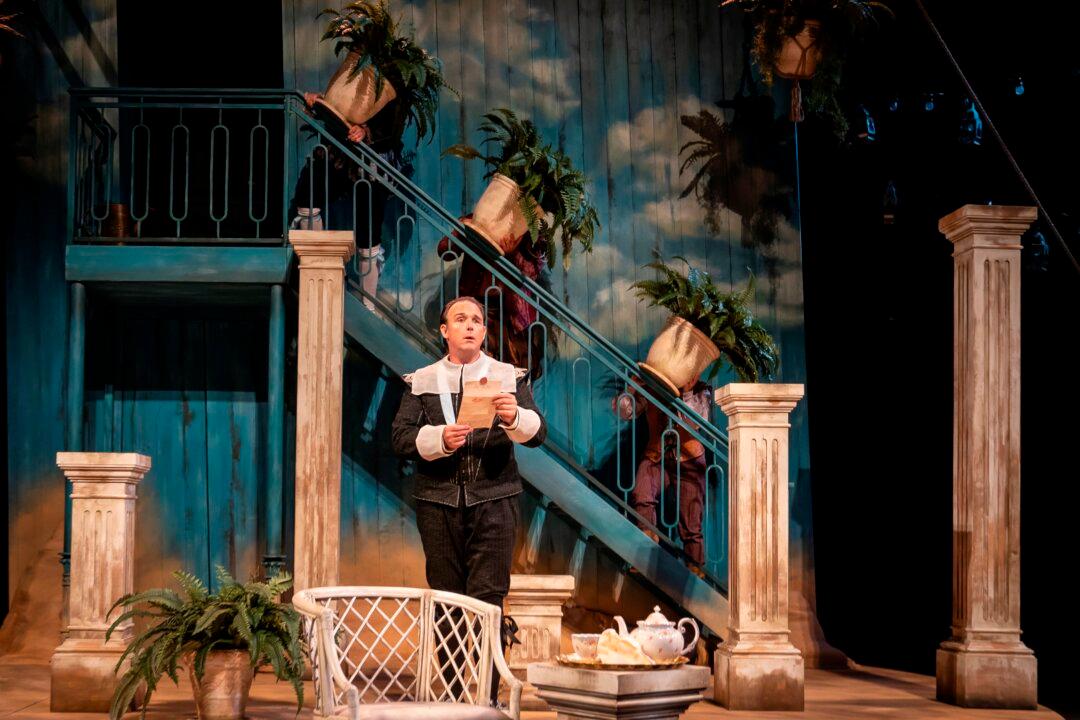The 1903 children’s classic “Rebecca of Sunnybrook Farm” by Kate Douglas Wiggin is undeniably refreshing despite its age.
The book has very little in common with the Shirley Temple film by the same title. In the book, Rebecca does not become a radio star despite the reluctance of her aunts—that she has aunts, befriends a millionaire, and has an older sister are almost all that she and Shirley Temple’s character have in common.
Yet “Rebecca” is an inspiring book for children gifted in language. It is no accident that Frances Hodgson Burnett, Jack London, and Mark Twain, among other writers, were known to have loved the book and it is a joy for readers who love the English language and who love the idea of genius waiting to be discovered.
Rebecca is a wonder which no one with sense can miss. Even at age 7 she bedazzles and befriends. Her eyes are overly large and bewitchingly beautiful, but these are not really what captures hearts. She has a gift for gab that not only entertains and endears but enlightens.
The book chronicles Rebecca’s life from 7 to 17. At 7, she is sent to live with two maiden aunts, Miranda and Jane (Miranda is very stern indeed), in order to give her a chance at schooling. Her widowed mother with seven children and sister to Miranda and Jane could never afford this luxury. But staunch Aunt Miranda is not impressed with Rebecca’s charm and wit and is determined to refashion her into something sensible, if completely ordinary.
Aunt Jane loves and protects Rebecca when she can, seeing innocence and joy in the child, and although Rebecca tries, she can never seem to please Aunt Miranda.
Important in Rebecca’s young life are Jeremiah and Sarah Cobb, her first friends in her new town of Riverboro; her best friend Emma Jane Perkins; and Adam Ladd, a successful young businessman who, by the end of the book, is clearly smitten with her in a way that could not have been foretold from his past association as her benefactor.
Over the years Rebecca struggles with her heritage of poverty as well as the shame her aunt would inflict on her due to her own very vivacious nature. And Rebecca does struggle to develop the common sense and orderly ways that her aunt demands. She thrives in school and plans to create a career for herself to help her family and pay back her aunts for their bringing her up; she also eventually wins the admiration and even the heart of her aunt.
This book may not be for every child. Rebecca’s gifts are so central to the book, that only those children who feel somewhat out of place in their environment are likely to take to her. Moreover, the vocabulary it requires is beyond most young readers.
Nonetheless, for gifted readers, the book can be a profound lesson in the virtues that supplement the exceptional person: humility and determination. Rebecca was never indulged nor taught to think highly of herself—neither by her mother or her aunts—and so learns to use her abilities only to be of service to others.
As Rebecca’s teacher says of her: “I don’t regret one burden that Rebecca has borne or one sorrow that she has shared. Necessity has only made her brace; poverty has only made her daring and self-reliant.”
Being of use to others was author Kate Douglas Wiggin’s dearest hope. What she wished to take with her in her casket were the following words: “What she had she gave gladly—hoping it might somehow please, or help, those who had less. If it was little, at least she tried to multiply and fructify it by use; but were it little, or much, she wanted to show her worthiness to possess, by proving herself willing to serve.”
Kate Douglas Wiggin (1856–1923) was an American writer and kindergarten educator.
The book has very little in common with the Shirley Temple film by the same title. In the book, Rebecca does not become a radio star despite the reluctance of her aunts—that she has aunts, befriends a millionaire, and has an older sister are almost all that she and Shirley Temple’s character have in common.
Yet “Rebecca” is an inspiring book for children gifted in language. It is no accident that Frances Hodgson Burnett, Jack London, and Mark Twain, among other writers, were known to have loved the book and it is a joy for readers who love the English language and who love the idea of genius waiting to be discovered.
Rebecca is a wonder which no one with sense can miss. Even at age 7 she bedazzles and befriends. Her eyes are overly large and bewitchingly beautiful, but these are not really what captures hearts. She has a gift for gab that not only entertains and endears but enlightens.
The book chronicles Rebecca’s life from 7 to 17. At 7, she is sent to live with two maiden aunts, Miranda and Jane (Miranda is very stern indeed), in order to give her a chance at schooling. Her widowed mother with seven children and sister to Miranda and Jane could never afford this luxury. But staunch Aunt Miranda is not impressed with Rebecca’s charm and wit and is determined to refashion her into something sensible, if completely ordinary.
Aunt Jane loves and protects Rebecca when she can, seeing innocence and joy in the child, and although Rebecca tries, she can never seem to please Aunt Miranda.
Important in Rebecca’s young life are Jeremiah and Sarah Cobb, her first friends in her new town of Riverboro; her best friend Emma Jane Perkins; and Adam Ladd, a successful young businessman who, by the end of the book, is clearly smitten with her in a way that could not have been foretold from his past association as her benefactor.
Over the years Rebecca struggles with her heritage of poverty as well as the shame her aunt would inflict on her due to her own very vivacious nature. And Rebecca does struggle to develop the common sense and orderly ways that her aunt demands. She thrives in school and plans to create a career for herself to help her family and pay back her aunts for their bringing her up; she also eventually wins the admiration and even the heart of her aunt.
This book may not be for every child. Rebecca’s gifts are so central to the book, that only those children who feel somewhat out of place in their environment are likely to take to her. Moreover, the vocabulary it requires is beyond most young readers.
Nonetheless, for gifted readers, the book can be a profound lesson in the virtues that supplement the exceptional person: humility and determination. Rebecca was never indulged nor taught to think highly of herself—neither by her mother or her aunts—and so learns to use her abilities only to be of service to others.
As Rebecca’s teacher says of her: “I don’t regret one burden that Rebecca has borne or one sorrow that she has shared. Necessity has only made her brace; poverty has only made her daring and self-reliant.”
Being of use to others was author Kate Douglas Wiggin’s dearest hope. What she wished to take with her in her casket were the following words: “What she had she gave gladly—hoping it might somehow please, or help, those who had less. If it was little, at least she tried to multiply and fructify it by use; but were it little, or much, she wanted to show her worthiness to possess, by proving herself willing to serve.”
Kate Douglas Wiggin (1856–1923) was an American writer and kindergarten educator.




